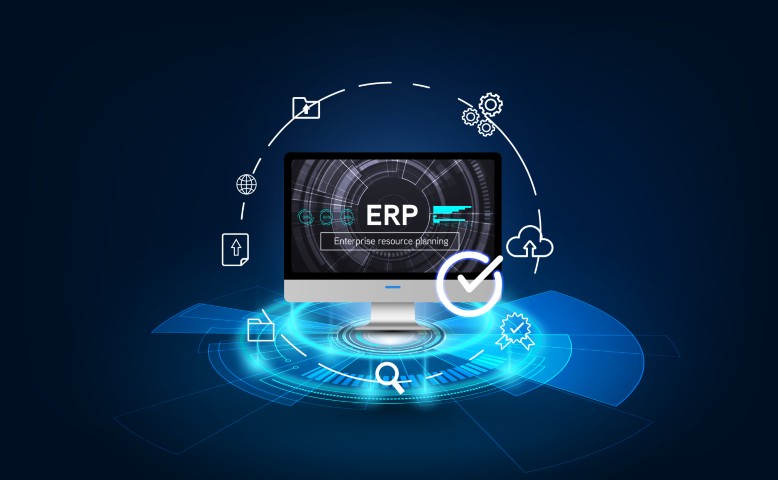In today’s business world, data management and analysis have become one of the key elements for gaining a competitive advantage. Companies need various tools to effectively use their data and make strategic decisions. At this point, SAP Business One comes into play.
SAP Business One is a comprehensive ERP (Enterprise Resource Planning) solution specifically designed for small and medium-sized enterprises. This system enables businesses to manage all their processes on a single platform. What is SAP Business One? In essence, it is a software package that integrates finance, accounting, sales, inventory management, and many other functions.
The features of SAP Business One provide businesses with several benefits, such as increasing operational efficiency, automating business processes, ensuring data accuracy, and reducing costs. In this article, we will focus on the reporting and data visualization solutions offered by SAP Business One. We will examine how businesses can analyze and visualize their data, as well as the impact of these processes on strategic decision-making.
What is Data Visualization?
Data visualization is the process of presenting raw data using charts, tables, maps, and other visual tools. This method makes complex data sets more understandable and accessible. Since the human brain processes visual information more quickly and effectively, data visualization makes analysis and interpretation easier.
When answering the question “What is data visualization?”, it is important to note its numerous benefits for businesses. Data visualization guides companies in making strategic decisions. The question “How is data visualization done?” depends on the tools and techniques used. Advanced ERP solutions like SAP Business One provide a variety of tools and features that simplify the visualization process. These tools help businesses analyze their data more effectively and optimize workflows.
What is SAP Business One?
SAP Business One is an integrated ERP software solution that allows small and medium-sized businesses to manage their operations on a single platform. It offers all the tools necessary to increase efficiency, reduce costs, and make better decisions.
Key features include:
-
Real-time data analysis
-
Customizable reporting
-
Powerful data visualization tools
SAP Business One is scalable, user-friendly, and offers mobile access, enabling companies to reach their data anytime and anywhere. More than just an ERP system, it provides the insights businesses need to make strategic decisions, making it a strong supporter of data analysis and visualization.
What is Data Analysis in SAP Business One?
SAP Business One provides powerful tools for businesses to analyze their data effectively. Data analysis is the process of examining and interpreting data to gain the information required for strategic decision-making.
With its user-friendly interface and strong analytics engine, SAP Business One enables companies to process large data sets quickly and efficiently. Real-time analysis helps track performance instantly and supports rapid decision-making.
Customizable reporting tools also allow businesses to create tailored reports and conduct in-depth analysis according to their specific needs.
How to Prepare for Data Visualization?
A successful data visualization process begins with proper preparation. To present data in a meaningful and accurate way, a few key steps must be followed. SAP Business One simplifies these steps for more effective data management.
-
Define Goals: Clearly identify the purpose of visualization. Decide which questions the data should answer and which decision-making processes it will support (e.g., monitoring sales performance or analyzing customer behavior).
-
Data Collection and Cleaning: Reliable data is essential. SAP Business One combines data from different departments on a single platform and ensures accuracy by eliminating errors or inconsistencies.
-
Data Structuring and Classification: Organize raw data into categories such as product, region, or date to create clearer and more effective visuals. SAP’s data structuring tools accelerate this process.
-
Choose the Right Tools and Formats: Select the proper visualization format—charts, tables, maps, or dashboards—to best represent the data. SAP Business One offers built-in options for flexibility.
How is Data Visualization Done in SAP Business One?
The visualization process starts with collecting and preparing the data. SAP Business One’s processing capabilities clean, categorize, and transform data for analysis.
Using built-in charts, tables, and other tools, data can then be presented in a more understandable and accessible format. The user-friendly interface ensures quick and easy visualization. Businesses can use these tools to track performance and make better strategic decisions.
Why is Data Visualization Important?
Data visualization provides several critical advantages for businesses:
-
Makes complex data more understandable.
-
Enables faster and more accurate interpretation.
-
Helps businesses identify strengths and weaknesses clearly.
-
Supports better, data-driven decisions.
SAP Business One empowers companies with robust tools that enhance the use of data, helping them manage resources more effectively and strategically.
Reporting Features of SAP Business One
SAP Business One offers powerful reporting features that help businesses understand their data and make effective decisions. It allows users to create customized reports and provides a range of tools for data analysis and visualization.
Examples of reporting capabilities include:
-
Financial reports
-
Sales analyses
-
Inventory reports
-
Customer relationship management reports
With real-time reporting, users can work with up-to-date data, evaluate current performance, and take action quickly. Thanks to its user-friendly interface and strong processing capabilities, reporting and visualization in SAP Business One become more accessible and effective.


